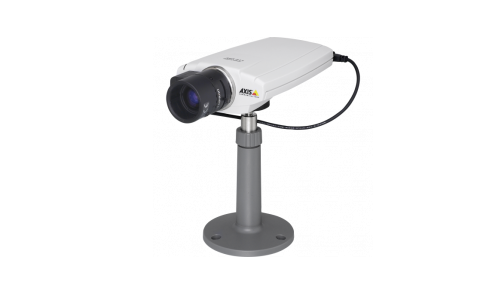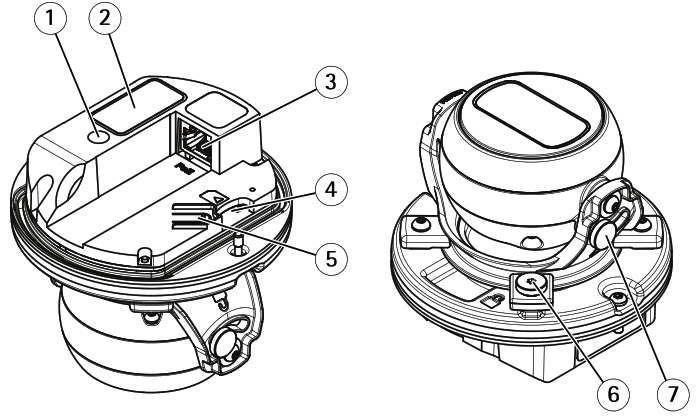
AXIS M31 Network Camera SeriesAXIS M3106-L Mk II Network CameraAXIS M3106-LVE Mk II Network Camera
User Manual:AXIS M31 Network Camera Series
System overview
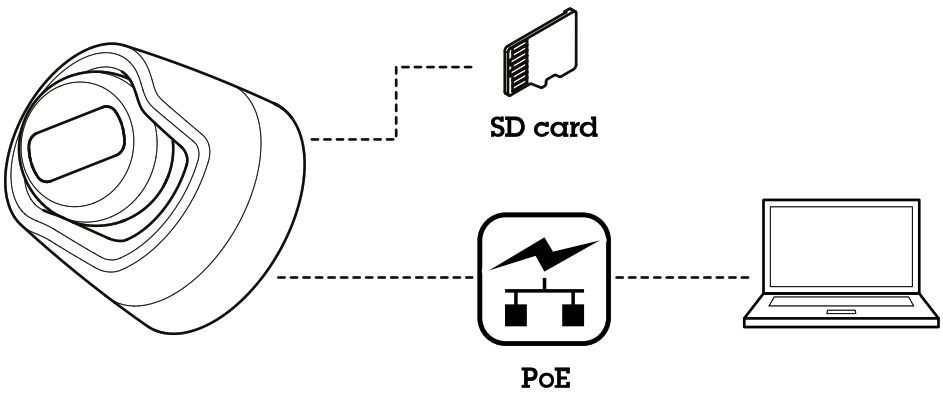
Product overview
- Status LED indicator
- Part number (P/N) & Serial number (S/N)
- Network connector (PoE)
- SD card slot
- Control button\
- Pan lock screw
- Tilt lock screw
How to install the camera
You can access the built-in help through your product’s web page. The help provides more detailed information on the product’s features and their settings.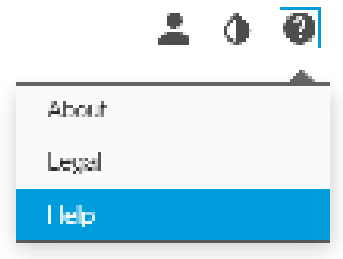
How to access the product
AXIS IP Utility and AXIS Camera Management are recommended methods for finding Axis products on the network and assigning them IP addresses in Windows®. Both applications are free and can be downloaded from axis.com/support The product can be used with the following browsers:
- ChromeTM (recommended), Firefox® , Edge®, or Opera® with Windows®
- ChromeTM (recommended) or Safari® with OS X®
- Chrome TM or Firefox® with other operating systems.If you need more information about recommended browsers, go to xis.com/browser- support
How to access the product from a browser
1. Start a web browser.2. Enter the IP address or hostname of the Axis product in the browser’s address field. To access the product from a Mac computer (OS X), go to Safari, click on Bonjour and select the product from the drop-down list. If you do not know the IP address, use AXIS IP Utility to locate the product on the network. For information about how to discover and assign an IP address, see the document Assign an IP Address and Access the Video Stream on Axis Support web at axis.com/support
Note: To show Bonjour as a browser bookmark, go to Safari > Preferences.3. Enter your username and password. If this is the first time the product is accessed, the root password must first be configured.4. The product’s live view page opens in your browser.
About secure passwords
ImportantWhen setting the initial password, the password is sent in clear text over the network. If there is a risk of network sniffing, first set up a secure and encrypted HTTPS connection before resetting the passwords.
How to install the camera
The device password is the primary protection for the data and services. Axis’ products do not impose a password policy as products may be used in various types of installations, but to protect your data do the following:• Don’t use the default password that comes with the products.• Use a password with at least 8 characters, preferably using a password generator.• Don’t expose the password.• Change password at a recurring interval, at least once a year.
AXIS Internet Dynamic DNS Service
AXIS Internet Dynamic DNS Service assigns a hostname for easy access to the product. For more information, see www.axiscam.net
To register the Axis product with AXIS Internet Dynamic DNS Service, go to System Options > Network > TCP/IP > Basic. Under Services, click the AXIS Internet Dynamic DNS Service Settings button (requires access to the Internet). The domain name currently registered at AXIS Internet Dynamic DNS service for the product can at any time be removed.Note: AXIS Internet Dynamic DNS Service requires IPv4.
AXIS Video Hosting System (AVHS)
AVHS used in conjunction with an AVHS service, provides easy and secure Internet access to live and recorded video accessible from any location. For more information and help to find a local AVHS Service Provider go to www.axis.com/hosting The AVHS settings are configured under System Options > Network > TCP IP > Basic. The possibility to connect to an AVHS service is enabled by default. To disable, clear the Enable AVHS box.One-click enabled – Press and hold the product’s control button (see Product overview on page 4 ) for about 3 seconds to connect to an AVHS service over the Internet. Once registered, Always will be enabled and the Axis product stays connected to the AVHS service. If the product is not registered within 24 hours from when the button is pressed, the product will disconnect from the AVHS service. Always – The Axis product will constantly attempt to connect to the AVHS service over the Internet. Once registered, the product will stay connected to the service. This option can be used when the product is already installed and it is not convenient or possible to use the one-click installation.
About capture modes
A capture mode consists of a resolution and the corresponding frame rate available in the product. The capture mode setting affects the camera’s field of view and aspect ratio.The lower resolution capture mode is cropped out from the highest resolution.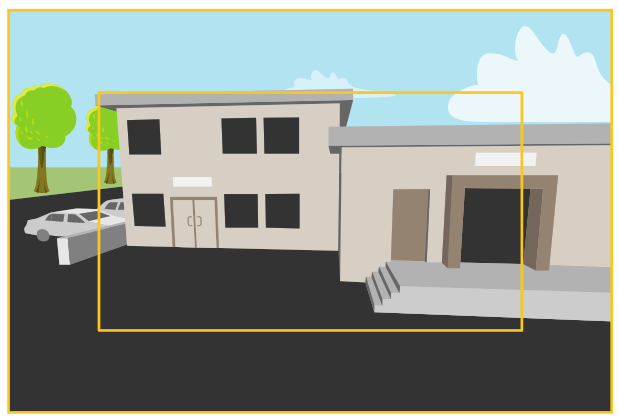 The image shows how the field of view and aspect ratio can change between two different capture modes.
The image shows how the field of view and aspect ratio can change between two different capture modes.
How to select capture mode
What capture mode to choose depends on the requirements of frame rate and resolution for the specific surveillance setup. For specifications about available capture modes, see the product’s datasheet. To find the latest version of the datasheet, go to axis.com
How to choose video compression format
Decide which compression method to use based on your viewing requirements, and on the properties of your network. The available options are:Motion JPEGMotion JPEG or MJPEG is a digital video sequence that is made up of a series of individual JPEG images. These images are then displayed and updated at a rate sufficient to create a stream that shows constantly updated motion. For the viewer to perceive motion video the rate must be at least 16 image frames per second. Full motion video is perceived at 30 (NTSC) or 25 (PAL) frames per second. The Motion JPEG stream uses considerable amounts of bandwidth but provides excellent image quality and access to every image contained in the stream.H.264 or MPEG-4 Part 10/AVCNote:H.264 is licensed technology. The Axis product includes one H.264 viewing client license. Installing additional unlicensed copies of the client is prohibited. To purchase additional licenses, contact your Axis reseller.H.264 can, without compromising image quality, reduce the size of a digital video file by more than 80% compared to the Motion JPEG format and by as much as 50% compared to the MPEG-4 standard. This means that less network bandwidth and storage space are required for a video file. Or seen another way, higher video quality can be achieved for a given bitrate.H.265 or MPEG-H Part 2/HEVC Note:H.265 is licensed technology. The Axis product includes one H.265 viewing client license. Installing additional unlicensed copies of the client is prohibited. To purchase additional licenses, contact your Axis reseller.
How to reduce bandwidth and storage
ImportantIf you reduce the bandwidth it can result in fewer details in the picture.1. Go to live view and select H.264/H.265.2. Go to Settings > Stream.3. Do one or more of the following:– Turn on the Zipstream functionality and select the desired level.Note: The zipstream settings are used for both H.264 and H.265.– Turn on dynamic GOP and set a high GOP length value.-Increase the compression.-Turn on dynamic FPS.
How to reduce noise in low-light conditions
To reduce noise in low-light conditions, you can adjust one or more of the following settings:• Make sure that the exposure mode is automatic.Note: Increasing the max shutter value can result in motion blur.• The shutter speed should be as slow as possible, which means you should set max shutter to the highest possible value.• Reduce sharpness in the image.
How to select exposure mode
There are several exposure mode options in the camera that adjusts aperture, shutter speed, and gain to improve image quality for specific surveillance scenes. In the Image tab, select between the following options:• For most use cases, select Automatic exposure.• For environments with certain artificial lighting, for example, fluorescent lighting, select Flicker-free. Select the same frequency as the power line frequency.• For environments with certain artificial light and bright light, for example outdoors with fluorescent lighting at night and sun during daytime, select Flicker-reduced. Select the same frequency as the power line frequency.• To lock the current exposure settings, select Hold current. How to maximize details in an image Important If you maximize details in an image, bitrate increases and might lead to a reduced frame rate.• Make sure to select the capture mode that has the highest resolution.• Set compression as low as possible.• Select MJPEG streaming.• Turn off the Zipstream functionality.
How to trigger an action
1. Go to Settings > System > Events to set up an action rule. The action rule defines when the product will perform certain actions. Action rules can be setup as scheduled, recurring, or for example, triggered by motion detection.2. Select what Trigger must be met to trigger the action. If you specify more than one trigger for the action rule, all of them must be met to trigger the action.3. Select which Action the camera should perform when the conditions are met.Note:If you make changes to an active action rule, the action rule needs to be restarted for the changes to take effect.
Troubleshooting
How to reset to factory default settings
ImportantReset to factory default should be used with caution. A reset to factory default resets all settings, including the IP address, to the factory default values.To reset the product to the factory default settings:1. Disconnect power from the product.2. Press and hold the control button while reconnecting power. See Product overview.3. Keep the control button pressed for 15–30 seconds until the status LED indicator flashes amber.4. Release the control button. The process is complete when the status LED indicator turns green. The product has been resetto the factory default settings. If no DHCP server is available on the network, the default IP address is 192.168.0.905. Use the installation and management software tools to assign an IP address, set the password, and access the video stream.The installation and management software tools are available from the support pages on axis.com/support
How to check the current firmware
Firmware is the software that determines the functionality of network devices. One of your first actions when troubleshooting a problem should be to check the current firmware version. The latest version may contain a correction that fixes your particular problem.To check the current firmware:1. Go to the product’s webpage.2. Click on the help menu.3. Click About.
How to upgrade the firmware
Important:Preconfigured and customized settings are saved when the firmware is upgraded (provided that the features are available in the new firmware) although this is not guaranteed by Axis Communications AB.Note:When you upgrade the product with the latest firmware, the product receives the latest functionality available. Always read the upgrade instructions and release notes available with each new release before upgrading the firmware. To find the latest firmware and the release notes, go to axis.com/support/firmware1. Download the latest firmware file to your computer, available free of charge at axis.com/support/firmware2. Log in to the product as an administrator.Note:It is important that the product remains connected to the power source throughout the upgrade process.3. Go to Settings > System > Maintenance in the product’s webpage and follow the instructions. When the upgrade has finished, the product restarts automatically. AXIS Camera Management can be used for multiple upgrades. Find out more at axis.com/products/axis-camera-management.
Technical issues, clues, and solutions
If you can’t find what you’re looking for here, try the troubleshooting section at axis.com/support
Problems upgrading the firmwareFirmware upgrade failure: If the firmware upgrade fails, the product reloads the previous firmware. The most common reason is that the wrong firmware file has been uploaded. Check that the name of the firmware file corresponds to your product and try again.
Problems setting the IP addressThe product is located on a different subnet: If the IP address intended for the product and the IP address of the computer used to access the product are located on different subnets, you cannot set the IP address. Contact your network administrator to obtain an IP address.The IP address is being used by another device: Disconnect the Axis product from the network. Run the ping command (in a Command/DOS window, type ping and the IP address of the product):
- If you receive: Reply from <IP address>: bytes=32; time=10… this means that the IP address may already be in use by another device on the network. Obtain a new IP address from the network administrator and reinstall the product.
- If you receive: Request timed out, this means that the IP address is available for use with the Axis product. Check all cabling and reinstall the product.
Possible IP address conflict with another device on the same subnet : The static IP address in the Axis product is used before the DHCP server sets a dynamic address.This means that if the same default static IP address is also used by another device, there may be problems accessing the product.The product cannot be accessed from a browser:Cannot login: When HTTPS is enabled, ensure that the correct protocol (HTTP or HTTPS) is used when attempting to log in. You may need to manually type http or https in the browser’s address field. If the password for the user root is lost, the product must be reset to the factory default settings. See How to reset to factory default settings.
The IP address has been changed by DHCP: IP addresses obtained from a DHCP server are dynamic and may change. If the IP address has been changed, use AXIS IP Utility or AXIS Camera Management to locate the product on the network. Identify the product using its model or serial number, or by the DNS name (if the name has been configured). If required, a static IP address can be assigned manually. For instructions, go to axis.com/support.Certificate error when using IEEE 802.1X: For authentication to work properly, the date and time settings in the Axis product must be synchronized with an NTP server. Go to Settings > System > Date and time.The product is accessible locally but not externallyRouter configuration: Check that your router allows incoming data traffic to the Axis product. The router must support UPnP®Firewall protection: Check the Internet firewall with your network administrator.
Problems with streaming: Multicast H.264 only accessible by local clients: Check if your router supports multicasting, or if the router settings between the client and the product need to be configured. The TTL (Time To Live) value may need to be increased.No multicast H.264 displayed in the client: Check with your network administrator that the multicast addresses used by the Axis product are valid for your network.Check with your network administrator to see if there is a firewall preventing viewing.Poor rendering of H.264 images: Ensure that your graphics card is using the latest driver. The latest drivers can usually be downloaded from the manufacturer’s website.Color saturation is different in H.264 and Motion JPEG: Modify the settings for your graphics adapter. Go to the adapter’s documentation for more information.Lower frame rate than expected:• See Performance considerations on page 12.• Reduce the number of applications running on the client computer.• Limit the number of simultaneous viewers.• Check with the network administrator that there is enough bandwidth available.• Lower the image resolution.• In the product’s webpage set a capture mode that prioritizes frame rate. Changing the capture mode to prioritize frame rate might lower the maximum resolution depending on the product used and capture modes available.• The maximum frames per second is dependent on the utility frequency (60/50 Hz) of the Axis product.Can’t select H.265 encoding in live view: Web browsers do not support H.265 decoding. Use a video management system or application supporting H.265 decoding.
Performance considerations
When setting up your system, it is important to consider how various settings and situations affect the performance. Some factors affect the amount of bandwidth (the bitrate) required, others can affect the frame rate, and some affect both. If the load on the CPU reaches its maximum, this also affects the frame rate. The following factors are the most important to consider:• High image resolution or lower compression levels result in images containing more data which in turn affects the bandwidth.• Access by large numbers of Motion JPEG or unicast H.264 clients affects the bandwidth.• Simultaneous viewing of different streams (resolution, compression) by different clients affects both frame rate and bandwidth. Use identical streams wherever possible to maintain a high frame rate. Stream profiles can be used to ensure that streams are identical.• Accessing Motion JPEG and H.264 video streams simultaneously affects both frame rate and bandwidth.• Heavy usage of event settings affects the product’s CPU load which in turn affects the frame rate.• Using HTTPS may reduce frame rate, in particular if streaming Motion JPEG.• Heavy network utilization due to poor infrastructure affects the bandwidth.• Viewing on poorly performing client computers lowers perceived performance and affects frame rate.• Running multiple AXIS Camera Application Platform (ACAP) applications simultaneously may affect the frame rate and the general performance.
Specifications
To find the latest version of the product’s datasheet, go to the product page on axis.com and locate Support & Documentation.
LED Indicators
| Status LED | Indication |
| Unlit | Connection and normal operation. |
| Green | Shows steady green for 10 seconds for normal operation after startup completed. |
| Amber | Steady during startup. Flashes during firmware upgrade or reset to factory default. |
| Amber/Red | Flashes amber/red if network connection is unavailable or lost. |
| Red | Firmware upgrade failure. |
SD card slot
NOTICE• Risk of damage to SD card. Do not use sharp tools, metal objects, or excessive force when inserting or removing the SD card. Use your fingers to insert and remove the card.• Risk of data loss and corrupted recordings. Do not remove the SD card while the product is running. Unmount the SD card from the product’s webpage before removal.This product supports microSD/microSDHC/microSDXC cards (not included).For SD card recommendations, see axis.com
Control buttonThe control button is used for:• Resetting the product to factory default settings. See How to reset to factory default settings on page 10.• Connecting to an AXIS Video Hosting System service. To connect, press and hold the button for about 3 seconds until the status LED flashes green.
Connectors
Network connectorRJ45 Ethernet connector with Power over Ethernet (PoE).
User ManualAXIS M31 Network Camera Series© Axis Communications AB, 2017Ver. M3.2Date: September 2017Part No. 1695393
References
AXIS OS Portal User manual
Axis Communications – Leader in network cameras and other IP networking solutions | Axis Communications
Welcome to Axis support | Axis Communications
Firmware | Axis Communications
Wide dynamic range | Axis Communications
AXIS GENERAL SOFTWARE LICENSE TERMS | Axis Communications
AXIS Companion | Axis Communications
Welcome to Axis support | Axis Communications
Corridor format | Axis Communications
AXIS Device Manager | Axis Communications
Axis Communications – Leader in network cameras and other IP networking solutions | Axis Communications
Firmware | Axis Communications
[xyz-ips snippet=”download-snippet”]

